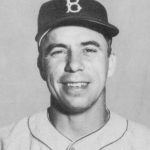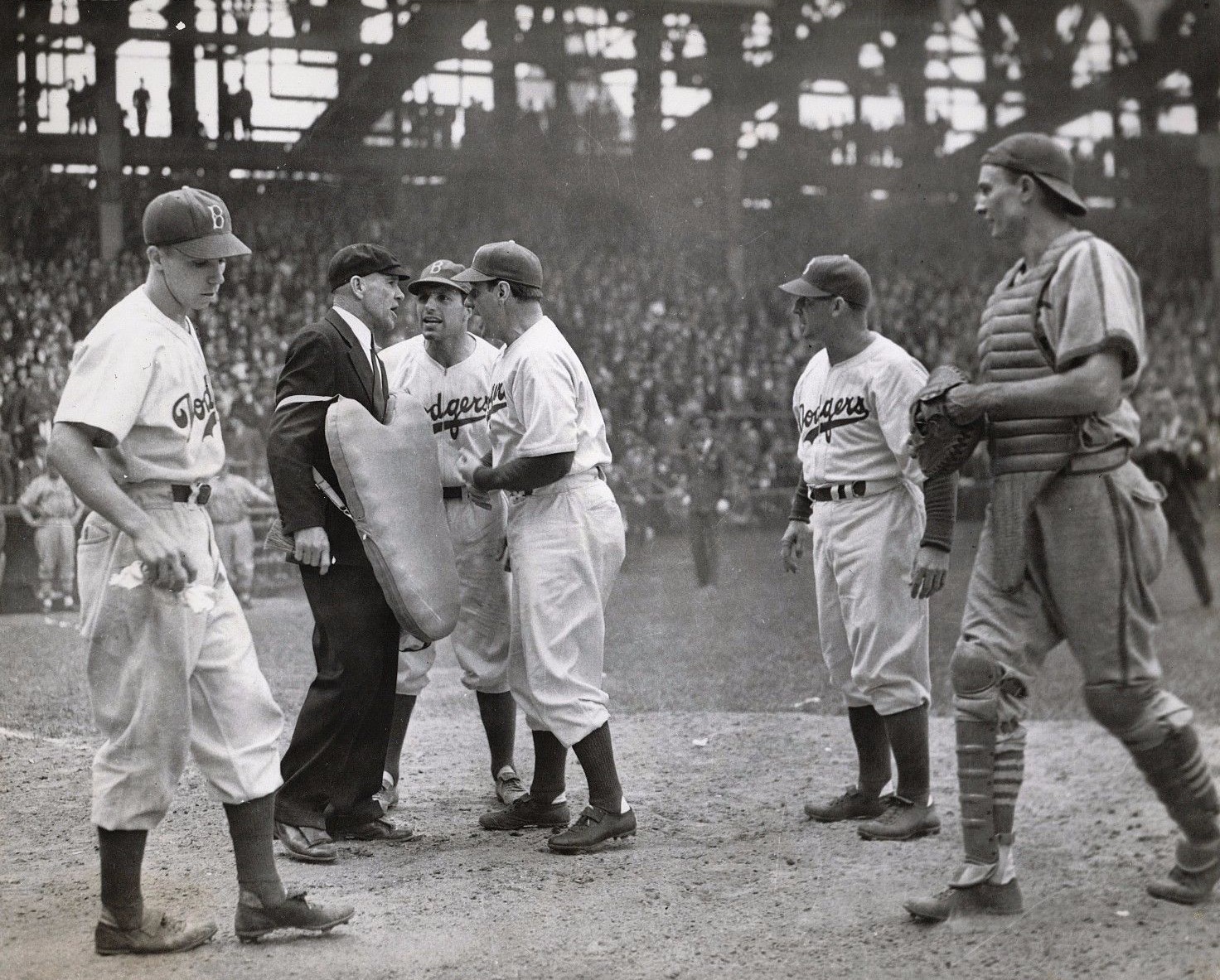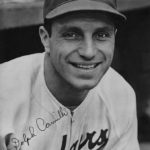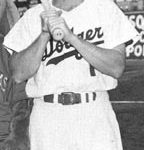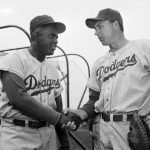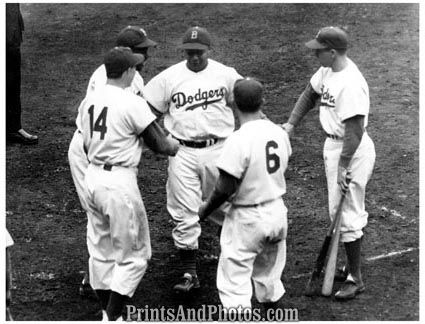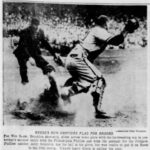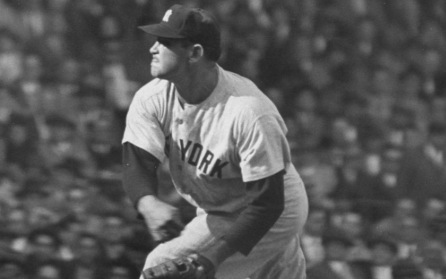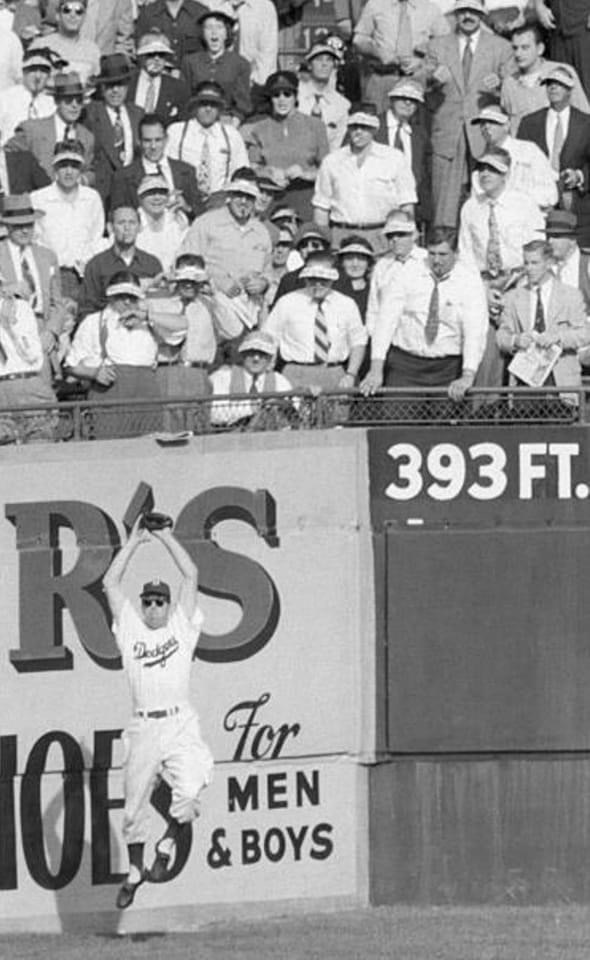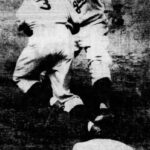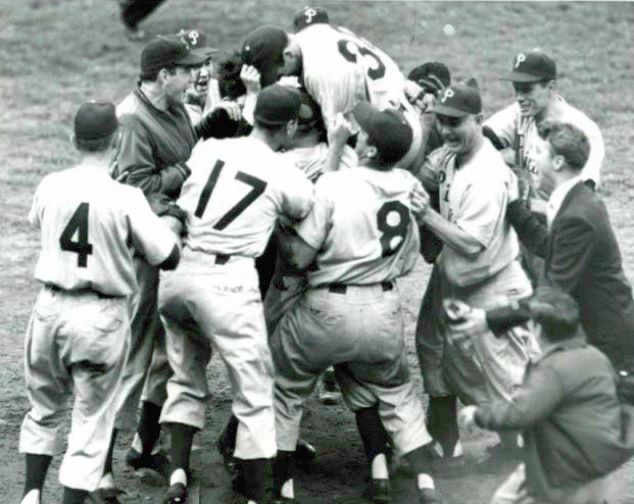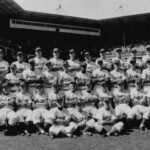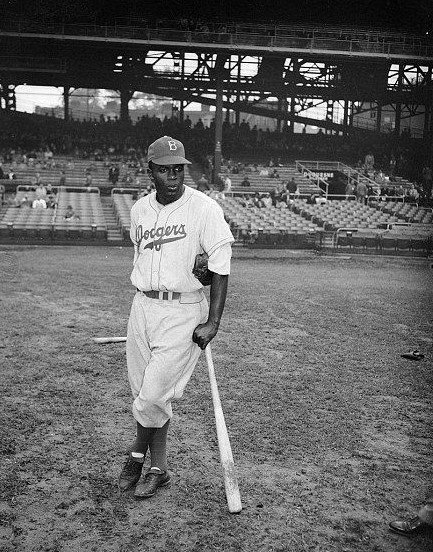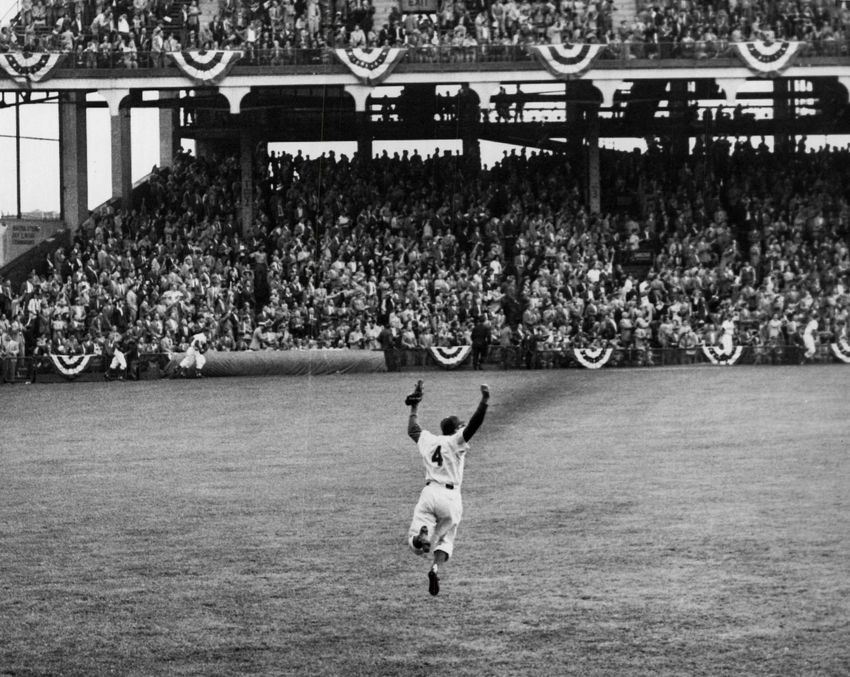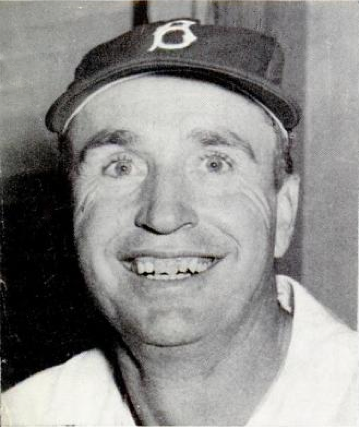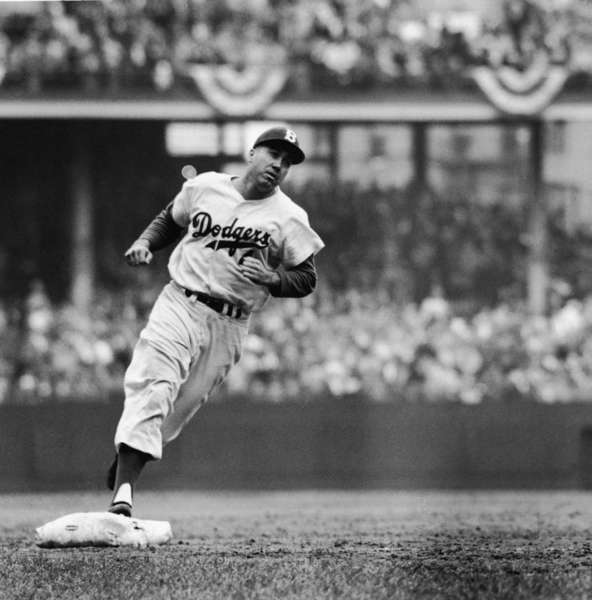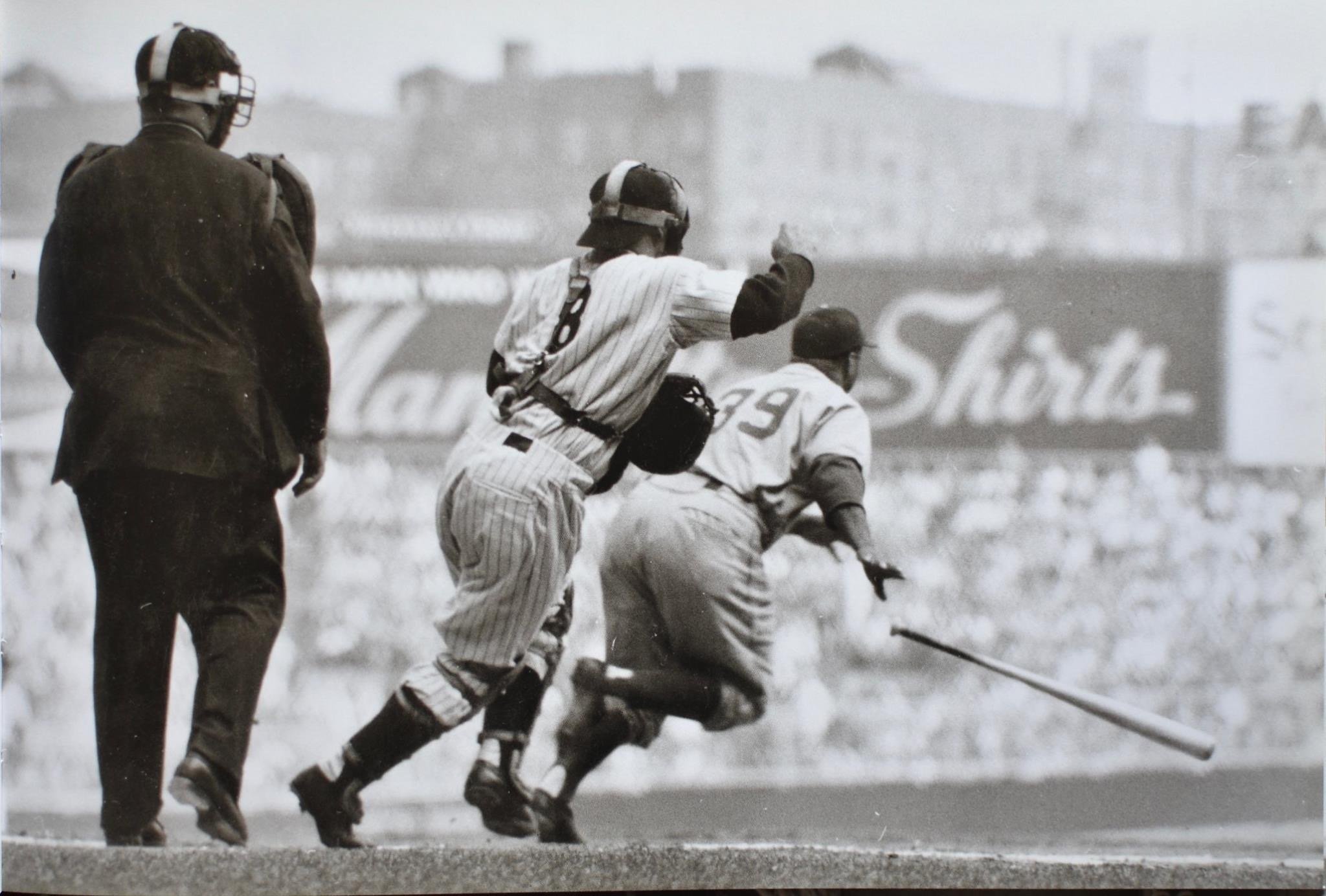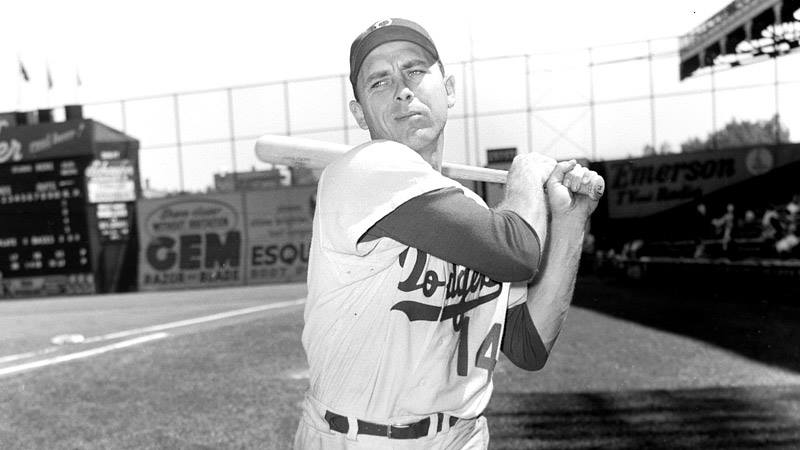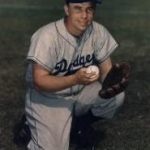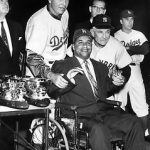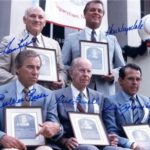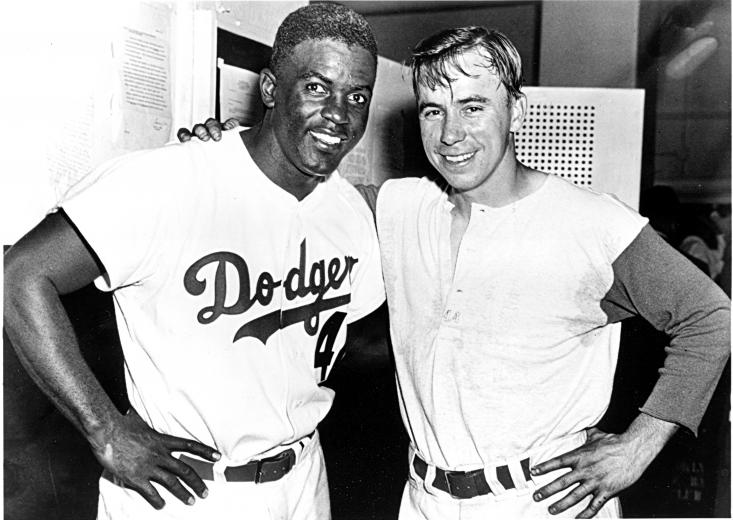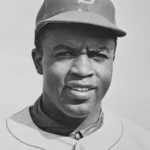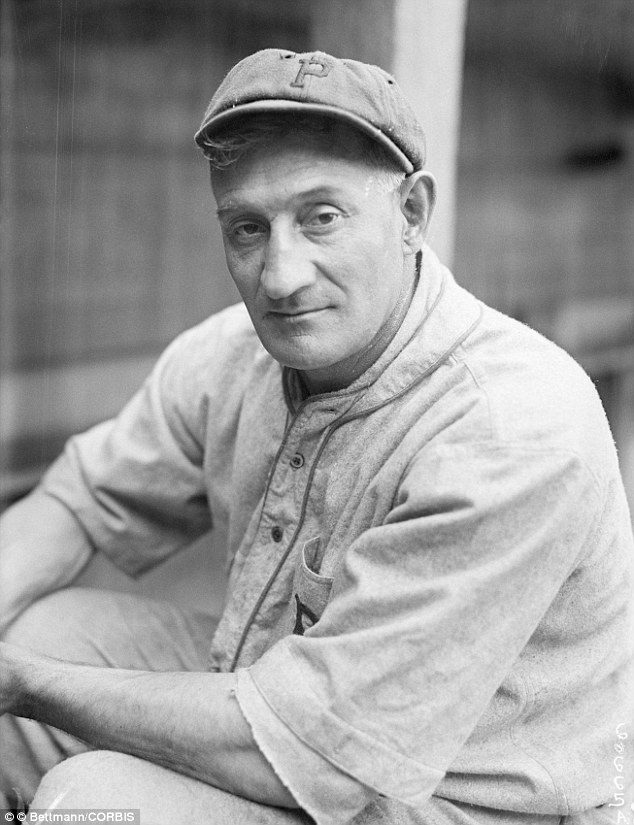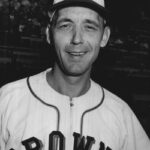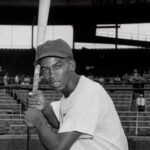Pee Wee Reese Stats & Facts
Pee Wee Reese Essentials
Positions: Shortstop and Third Baseman
Bats: Right • Throws: Right
5-10, 160lb (178cm, 72kg)
Born: July 23, 1918 in Ekron, KY
Died: August 14, 1999 in Louisville, KY
Buried: Resthaven Memorial Park, Louisville, KY
High School: DuPont Manual HS (Louisville, KY)
Debut: April 23, 1940 (7,094th in MLB history)
vs. BSN 3 AB, 1 H, 0 HR, 1 RBI, 0 SB
Last Game: September 26, 1958
vs. CHC 3 AB, 1 H, 0 HR, 0 RBI, 0 SB
Hall of Fame: Inducted as Player in 1984. (Voted by Veteran’s Committee)
View Pee Wee Reese’s Page at the Baseball Hall of Fame (plaque, photos, videos).
Full Name: Harold Henry Reese
Nicknames: The Little Colonel
View Player Bio from the SABR BioProject
Nine Other Players Who Debuted in 1940
Pee Wee Reese
Elmer Valo
Marty Marion
Walker Cooper
Dom DiMaggio
Pete Reiser
Harry Brecheen
Harry Walker
Stan Spence
All-Time Teammate Team
Coming Soon
Vintage Baseball HOT ON EBAY
Card Collections ENDING SOON ON EBAY
MOST WANTED ROOKIE CARDS
VINTAGE SPORTS TICKETS
Baseball Hall of Famers
Notable Events and Chronology for Pee Wee Reese Career
Intro
Against all odds, Pee Wee Reese earned an opportunity to play professional baseball, start for the Dodgers, play in several World Series, and be enshrined in the Hall of Fame. He did the little things that helped his teams win: bunt the runner over, go from first to third on a base hit, or range into the hole for a grounder. He was the best shortstop in the National League in the late 1940s and into the 1950s.
Pee Wee Reese got his nickname as a young champion marble shooter; a “pee wee” is a type of marble. A Kentucky native, he earned the monicker The Little Colonel as the star shortstop on the Louisville Colonels (American Association). After his arrival in Brooklyn, he was named captain of the Dodgers, and many called him The Captain. The title was well earned, as he was the leader of Dodger teams that won seven pennants in the 1940s and 1950s. When Jackie Robinson arrived in Brooklyn amid enormous pressures and player resentment, it was Reese who set the example of acceptance, putting his arm around Robinson’s shoulder on the field, showing the world he was Robinson’s teammate and friend.
Biography
After being signed by the Red Sox, the 5’10” 160-lb Reese proved his worth in Louisville. Managing and playing shortstop for Boston at the time was Joe Cronin, who wasn’t ready to make room for the talented youngster by moving himself to third base. He was sold to Brooklyn for $75,000, but Reese’s rookie 1940 season was marred by a fractured heel. He recovered in 1941 to lead the Dodgers to their first pennant since 1920. From 1941 through 1956, with a three-year absence in the navy during WWII, he averaged 148 games a year.
A smooth fielder, he became the premier shortstop of his era, an All-Star each year from 1947 to 1954. He was also a great leadoff hitter, leading the NL in walks (104) in 1947, in runs scored (132) in 1949, and in stolen bases (30) in 1952. He was also noted for his clutch hitting and excellent bat control. Reese’s highest average was .309 in 1954.
Reese was one of the most popular players on an idolized team. For his birthday in 1955, the Dodgers threw a party at Ebbets Field, showering him with $20,000 worth of gifts, and 35,000 fans lit candles and sang “Happy Birthday” to him as the lights went dark in the fifth inning. When the Dodgers moved to Los Angeles, Reese went along. He played 59 games in 1958 and became a coach. But he soon retired and went to work for the Louisville Slugger bat company. His leadership on the Dodgers’ pennant-winning teams gained him election by the Veterans Committee to the Hall of Fame in 1984
Best Season
Thirty years old when the season began, Reese was one of the best shortstops in baseball, and fastest. He stole 26 bases while also hitting 16 home runs. He led the NL with 132 runs scored. He drove in 73 and walked 116 times for a .396 OBP. He played every game of the schedule and led league shortstops in fielding. The Dodgers lost the World Series to the Yankees (of course), but Pee Wee led his club with a .316 batting average and six hits in the battle.
Factoid 1
Pee Wee Reese finished in the top ten in NL MVP voting eight times. Phil Rizzuto did it just once, when he won the award in 1950.
The 1950 National League Pennant Race
On October 1, 1950 the Dodgers met the Phillies in the final game of the season. The Phils led Brooklyn by one game. With Don Newcombe on the mound facing Robin Roberts (making his third start in five days), the game went into extra-innings. Philadelphia won 4-1 on Dick Sisler’s dramatic homer off Newcombe in the top of the 10th inning. As a result, the Phils won their first pennant in 35 years. Brooklyn’s only score came when Reese hit a high flyball into the screen over Ebbets Field’s right field wall. The ball fell on top of the wall and bounced around long enough for Reese to leg out an inside-the-park home run.
Jackie Robinson
Reese was a strong supporter of the first 20th century black Major League Baseball player, Jackie Robinson. He was serving a stint in the Navy when the news of Robinson’s signing came. Although he had little or no experience interacting with minorities — according to Reese, his meeting Robinson marked the first time in his life that he had shaken hands with a black man — he had no particular prejudices, either. It is reported that his father had made him starkly aware of racial injustice by showing him a tree where a lynching had occurred.[2] The modest Reese, who typically downplayed his pioneering role in helping to ease the breaking of the 80-year-old color line, said that his primary concern with regard to Robinson’s arrival was the possibility of Reese losing his shortstop job. Robinson was assigned to play as the team’s second baseman and, Reese retained his position.
Reese refused to sign a petition that threatened a boycott if Robinson joined the team. When Robinson joined the Dodgers in 1947 and traveled with them during their first road trip, he was heckled by fans in Cincinnati, Ohio. During pre-game infield practice, Reese, the captain of the team, went over to Robinson, engaged him in conversation, and put his arm around his shoulder in a gesture of support which silenced the crowd. This gesture is depicted in a bronze sculpture of Reese and Robinson, created by sculptor William Behrends, that was placed at KeySpan Park in Brooklyn and unveiled on November 1, 2005.
Throughout that difficult first year in the major leagues, Reese helped keep Robinson’s morale up amid all the abuse. As the 1947 season wore on, there was tacit acceptance of the fact that blacks were now playing big league ball and were probably there to stay. Robinson still got pitches thrown at him, but, as Reese recounted to author Roger Kahn, “I told him, ‘You know Jack, some of these guys are throwing at you because you’re black. But others are doing it just because they plain don’t like you.’” His role in nurturing Jackie Robinson aside, 1947 was a superb year for Reese, as he batted .284 with a league-leading 104 walks. He also had a career best slugging average of .426. Their rapport soon led shortstop Reese and second baseman Robinson to become one of the most effective defensive pairs in the sport’s history.
The friendship between Reese and Robinson is prominent in Roger Kahn’s classic work, The Boys of Summer. At Reese’s funeral, Joe Black, another major league baseball black pioneer, said,
“Pee Wee helped make my boyhood dream come true to play in the majors, the World Series. When Pee Wee reached out to Jackie, all of us in the Negro League smiled and said it was the first time that a white guy had accepted us. When I finally got up to Brooklyn, I went to Pee Wee and said, ‘Black people love you. When you touched Jackie, you touched all of us.’ With Pee Wee, it was No. 1 on his uniform and No. 1 in our hearts.”
@ET-DC@eyJkeW5hbWljIjp0cnVlLCJjb250ZW50IjoicG9zdF90YWdzIiwic2V0dGluZ3MiOnsiYmVmb3JlIjoiTGVhcm4gTW9yZSBhYm91dCB0aGUgdGVhbXMsIHBsYXllcnMsIGJhbGwgcGFya3MgYW5kIGV2ZW50cyB0aGF0IGhhcHBlbmVkIG9uIHRoaXMgZGF0ZSBpbiBoaXN0b3J5IC0gLSAtIC0gLSAtIC0gIiwiYWZ0ZXIiOiIiLCJsaW5rX3RvX3Rlcm1fcGFnZSI6Im9uIiwic2VwYXJhdG9yIjoiIHwgIiwiY2F0ZWdvcnlfdHlwZSI6InBvc3RfdGFnIn19@
Vintage Baseball HOT ON EBAY
Card Collections ENDING SOON ON EBAY
MOST WANTED ROOKIE CARDS
VINTAGE SPORTS TICKETS
Baseball Hall of Famers
Factoids, Quotes, Milestones and Odd Facts
Coming soon
Other Resources & Links
Baseball-Almanac.com
DeadBallEra Obituary
Retrosheet
WhatIfSports: Pee Wee Reese
More Reese Pages
View Player Info from the B-R Bullpen
View Player Bio from the SABR BioProject



